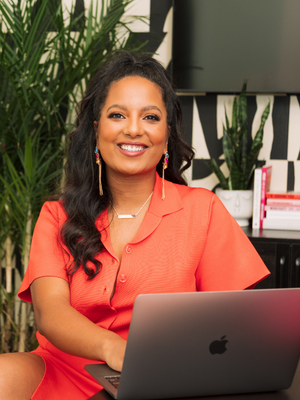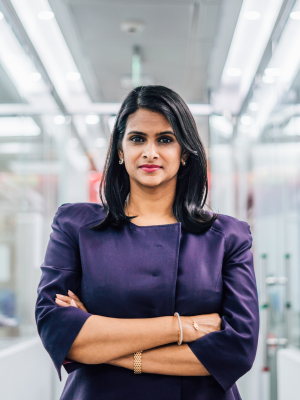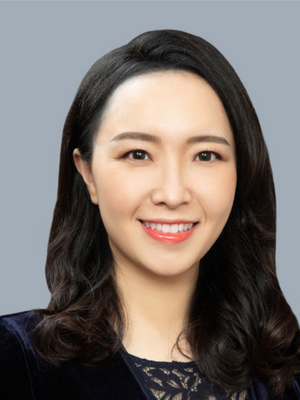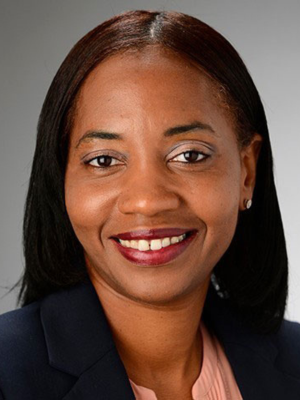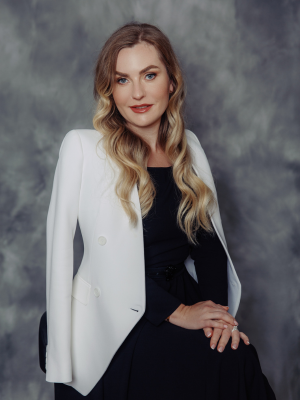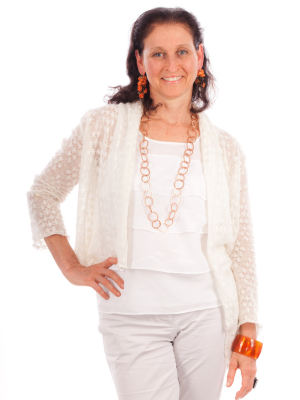 “When you stumble on a rock in a mountain climb, you find your way around and keep going,” says Liora Haymann. “You may even later sit on the rock that seemingly blocked you to enjoy the view.”
“When you stumble on a rock in a mountain climb, you find your way around and keep going,” says Liora Haymann. “You may even later sit on the rock that seemingly blocked you to enjoy the view.”
During her first year in Architecture School in Chile, Haymann’s studio teacher declared that he didn’t like wasting his time reviewing women’s projects because in two years they would marry and leave school. While it would be unacceptable today, that comment ignited a motivational fire in Haymann.
“I’m a rational person, so I looked at the classes above me and I thought, he’s just stating a fact. And then I said to myself, I’m going to prove him wrong,” she says. “I never thought he meant to dismiss us. He meant to push us. And that’s how I’ve taken it every time I found such challenges. I’ve never thought that somebody is putting me down. I’ve always thought it’s a challenge.”
Five years later, that teacher congratulated Haymann for being accepted for graduate studies at MIT in the US. But it remained true that out of a 50/50 gender split in the first year, only five women graduated as part of the 1983 class – whereas about twenty men did. She remains friends with her tight-knit female classmates still today.
From MIT to Chilean Urban Market to Global Destinations
MIT was eye-opening and introduced her to a more inclusive culture: “It gave me a lot more confidence on who I was, and I understood the freedom to pursue a path that was more mine.”
After graduating, and a couple of years working in Washington D.C., Haymann returned to Chile with her newborn daughter. With a few of her former male classmates, she co-founded an innovative architectural firm called URBE, as the only woman partner. With a combined background of US studies, they brought new techniques, visions and ways of introducing urban quality to the market. URBE became the best-in-class training ground for a new generation of young urban planners in Chile. But for family reasons, she then moved to Miami.
“Leaving URBE behind was difficult. It was my baby. At that time, there was not a global economy like we have now. Working across borders was not so common, so it was a darker time,” she reflects. “But again, every challenge is an opportunity.”
She crossed paths with OBMI, a premier hospitality and destination design company, which put her on the global stage and took her all around the world – China, Spain, Argentina, Mexico, the Caribbean and much more.
OBMI work is imbued with vision: the belief that design must celebrate local culture, landscape, or heritage, and create a journey of discovery for those who inhabit the space, whether for a weekend or a lifetime. OBMI became a great platform to develop her talents.
Moving From Design into Business Management
Being a very organized, structured, and process-oriented person, Haymann found that as she grew professionally, she gravitated towards management. After several years running international design projects – remote island resorts, boutique hotels, large scale master plans for waterfronts and mix-use, this eventually led to becoming a managing director and board member at OBMI, despite not having formal business education.
“Architects are trained to focus on design and to believe that design is the only valuable aspect of architecture,” she admits. “I had to re-educate my brain that I am even more valuable now because I understand design so well that I can make the bridge between management and design and make it much more effective for our clients, my team, and everybody to navigate the complex design process. I’m super proud of it, and now encourage others to become great managers. It’s been a great ride, with the company growing fivefold during this period.”
Recently, at 66 years old, she’s been contemplating what’s next and yet, it also feels premature.
“In my company, we are working towards passing on more power to the younger generation. OBMI is my second baby and therefore, letting go and trusting is again difficult,” she admits. “So you give it away, and then you grab it back because a part of you does not want to give it away. It’s a process and it’s a bit painful because I have a lot of energy and ideas related to work process and management that I want to apply.”
With a 102 year old father, Rudi Haymann, who has reinvented himself in his 90s, as a published author and public speaker, Haymann trusts in longevity and decades of re-creating herself ahead.
“It can be frustrating to see that a lot of business mentality is still caught in the 20th century where it was learn-work-retire,” she admits, “but that’s not the story today. How can businesses capture our acquired experience, at a time we are still full of energy?”
Being a ‘Shepherd Leader’ with A Wide Worldview
When it comes to her leadership style, Haymann self-identifies as what she dubs a “shepherd leader.” She leads from behind with a team that is organically in motion with many moving parts. She keeps her eye on the North and ensures everyone is staying oriented and moving towards the goal while she prevents anyone from getting stuck or going too far astray.
“There are many different ways of leading. I am not a ‘storyteller leader’ who may create large ideas and inspire people through their words. That’s a different way of moving people,” she says. “I will lead by example. I’ll walk the talk and people will see me walk, and they will learn.”
All along, she stays focused on three main goals: Design great projects. Make sure the team is inspired and fulfilled. Make good business.
Haymann feels her wide worldview has been essential to her success in global hospitality and luxury destination design. As a Jewish woman who grew up in Chile, with German parents, and then chose to study in the US, she carries different cultures and a great deal of heritage within her, always informing her perspective. She speaks several languages and notes “languages have embedded within them a way of seeing the world.”
She also believes her results-focused, solution-oriented, and driven nature have supported her in building trust. She’s adept at structuring, planning and breaking down complex projects into the who/how/when process and tasks to ensure everything comes together, flows and moves forward.
One of her strengths is to combine bird’s-eye strategy view with down-to-earth actionable tasks. With this double-lens she analyzed the firm’s data to identify key challenges and implemented processes, solutions, and unit linkages to drive smooth operations, efficiency, and communication as a basis to keep the team leveling up.
“In a design studio that is full of intuitive creatives, that is really useful. Because I understand the creative design process and I can also bring this structural talent that I have to respecting that intuitive process. Otherwise, it goes counter-current,” says Haymann. “How do you build that insight within the creative process? I can partner with the most creative person and become a really strong team because we cover it all.”
Fostering Honest and Direct Communication
“It’s difficult to give bad news, and so people often avoid it. I’ve learned through time that the best way to build trust and understanding is just to communicate as honestly as possible,” she says.
As she’s risen in leadership, a big mental shift has been making a strong and conscious effort to be more relationship-focused beyond the content of the work. This includes more check-ins and empathetic listening. With a half-smile, she admits she’s uncertain if she’d be called “nice,” but she trusts her team knows she cares about them.
“If we’re having a discussion, my focus is on the topic. I’m assuming that we’re both focusing on the content. But, with time, I’ve learned that many people focus on the relationship, and may sacrifice items in the topic to protect the relationship,” Haymann observes. “For example, they may not contradict. They may not bring up their ideas because they may be different from what somebody else in a more powerful position may be saying. They may feel vulnerable in expressing something.”
To invite others to speak honestly, she has learned to make an introduction upfront about her own direct style and valuing the discussion of viewpoints and being contradicted, because it encourages better, more nuanced thinking on the topic.
Being A Woman Architect in Real Estate Development
While architecture tends to be perceived as a very woman-friendly field, they’re less prominent in architecture in real estate development. “I’ve never had a woman client and I’ve worked for decades and decades,” says Haymann. “The industry is very male-dominated, likely because it involves both large money and big negotiations. In my company in Chile, URBE, I was the only woman partner. At OBMI, I was the first female managing director and board member. OBMI has been a great environment for growth, and I am grateful for the opportunities. I think the last fifteen years have been a big leap for women in design and hospitality, and I am happy to see that.”
She notes that the representation of women significantly diminishes as you escalate in the ranks. Architecture requires a lot of late nights and tense deadlines, and many women with family prefer to form their own smaller self-practice.
“I was super lucky. I had help that I trusted while raising a family, but I remember it as an extremely stressful time. I was forced to learn to be very efficient and focused to make decisions,” she recalls. “Maybe it’s just my personality, or that may have affected the relationship aspect of work for me. I would come in, do my work and go home, because I had stuff to do there and people waiting for me. Still today, it’s difficult for me to relax and go for a long lunch.”
At the same time, Haymann notes these days, she enjoys the ability to linger and work late: “I love to work. Why not work late if I can now? What a luxury.”
While things are changing visibly today around integrating family and work, it also brings up mixed feelings for the barriers women have faced.
“As a woman with a family, I, and the women I worked with, would never bring up family as an excuse for being late or not coming in. We would figure it out, because it could be counted against you,” she notes. “But today, I see young men who have families, very freely say, ‘I have a school meeting. My girl is sick. I have to stay home.’ I still don’t see the women saying that so freely. They’re still very careful. It’s nice to see the fathers being involved and taking this freedom, but I also lament that women never had it. It’s both good, and at the same time, it’s unfortunate guys have to say it for that to be acceptable.”
Haymann also notes being a woman has helped her to stand out and be memorable, and she leveraged it: “I made sure that people knew I was intelligent. That I would bring value. That what I would say was relevant. That I could speak up. That I was going to be absolutely responsive to my clients’ inquiries and needs and be available to them. I made sure that was clear, and that became an important platform,” she notes. Her expertise and confidence brought speaking opportunities at international forums and relationships that opened new business.
A female colleague recalled a moment when Haymann inspired her years ago. As attendees were coming into a boardroom, Haymann witnessed a young woman take a seat in the second row in a semi-full room.
“I immediately called her out and said, ‘You go sit at the table” she recalls. “I thought, why would a young woman decide to sit in the second row when there is space? The space at the table is for those who show up because they care. The second row is for those who come in late, no matter who they are.”
It took a while for Haymann to realize that she was a role model to other women, and she doubts young women today would default to the second row. Looking back, Haymann would tell her more junior self to be more playful and develop relationships more.
“With time and feedback, I became more aware other women were watching me, but I’ve never talked about it, because I think talking is cheap. Acting is important,” she notes. “For me, it’s always: Set the example. Show others what they can do.” She is adamant in supporting next gen at OBMI to expand their knowledge and leadership through their involvement in industry programs and events. She also led the creation of a hospitality design course at University of Miami, strengthening the firm’s position as a thought leader.
Carving a Path With Few Role Models
Haymann has a soft-spot for the Disney character, Maleficent: “The first time I met her was when my daughter was a little girl and we watched the original Disney film Sleeping Beauty from 1959. What struck me, were the female archetypes in this film. First, there is the queen who doesn’t speak a word in the whole movie. Then, the princess, who falls asleep; then the minuscule fairies, who do all the jobs for the prince, but they’re invisible. Like the secretaries and the wives and all these invisible people that, in those days, made things happen while the male hero shined. And then, there is Maleficent – who is independent, beautiful, lives in her own castle and has people that she reigns over. When she shows up, she is hated because she is powerful, she speaks and brings this curse, meaning she holds a power. Isn’t that interesting? This is how women were perceived in those days. Either powerful and bad. Or invisible and doing all the work, or mute.”
Across her career in architecture, Haymann had no particular real life female role models whom she wished to emulate, but rather was more inspired by her peers and colleagues. As she looks ahead to what’s next, she also finds few inspiring her for where she might go.
“I find myself again having to carve a path on my own. I’ve experienced enough transitions to know it’s going to be a good place, but I also expect there to be a rough time because you have to cross the rough sea before you can get to the other shore,” she reflects. “The rough times have always brought me good things later.”
Today, her 102 year old father is her inspiration. He’s living proof that you can always re-invent yourself, find enlivening purpose, and create relationships, again and again.
Translating old letters from German to Spanish (for the original edition) as she supported her father to write his own story, she also discovered more of herself. When she read that her grandfather wrote to her then 16-year old father, after being separated to escape Nazi persecution, that “Work is the holiest mission of man,” she saw herself in that perspective.
Referring to her “B side,” the life that is not as visible and happens outside of the realm of work, Haymann is looking for how to more deeply integrate all sides of who she is. Her “B side” passions include physical movement, nature, and writing.
Her passion for movement has gone from trekking, dancing and competitive skiing as a child to becoming immersed in Martha Graham technique to being certified as an Iyengar Yoga teacher to finding a love for free flow movement in Five Rhythms. While Iyengar yoga is about alignment, structures, weights, precision and tensions that mirror architecture, she’s moved towards a purer emotional expression in movement.
“I started working at a time where most feminine aspects didn’t have a place. So I put them on the side, and kept developing them because they’re extremely important. I think that’s why I find myself drawn to movement,” she says. “Movement is medicine. It’s an amazing self-knowledge tool, a place to go when emotions are driving, and a way to understand myself. I pray to move until the day I die.”
Her other big love is nature, reminding us we are both so small and capable of so much. She calls crossing the Andes Mountains on horseback and camping in the open air her “most luxurious trip” – not for the facilities, but to hold witness to the immensity of nature and the human spirit that would dare to cross mountains.
With her father being one of few living veterans of World War II’s 100 million fighting soldiers, she realizes that some stories reveal their layers and gain significance only with time.
“When we’re in middle of it, we’re just living. We’re doing our thing,” muses Haymann. “It’s only when we take a long-distance view that we start seeing the lessons and the value in all we’ve done. Things take on a different perspective. Perhaps that will also inform my next phase.”
By Aimee Hansen


